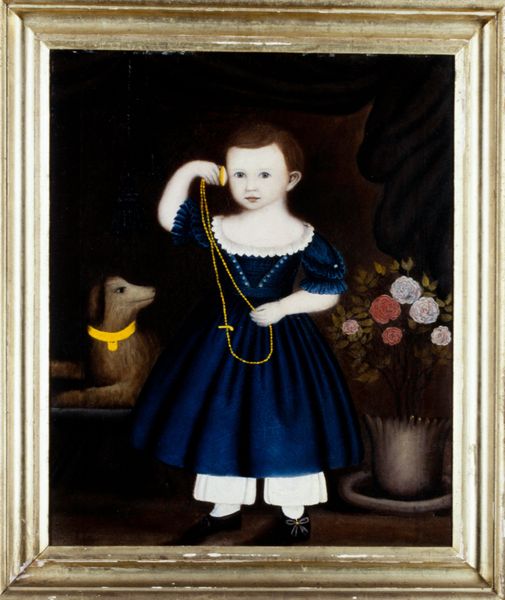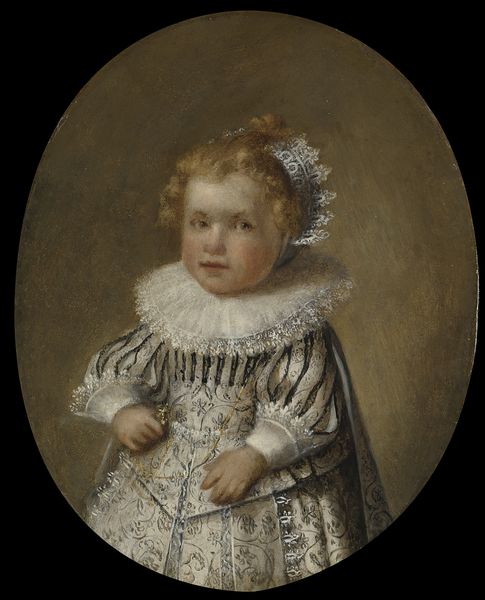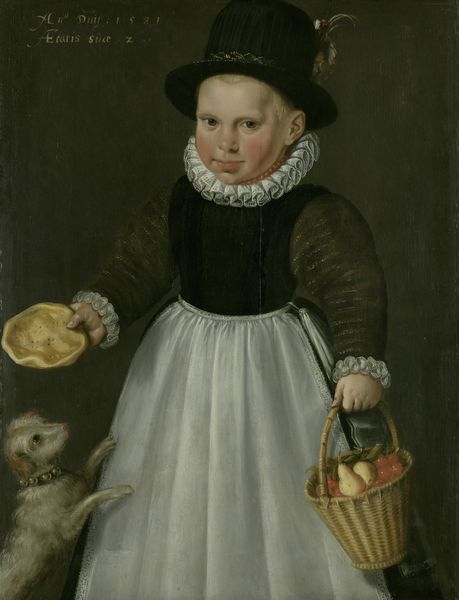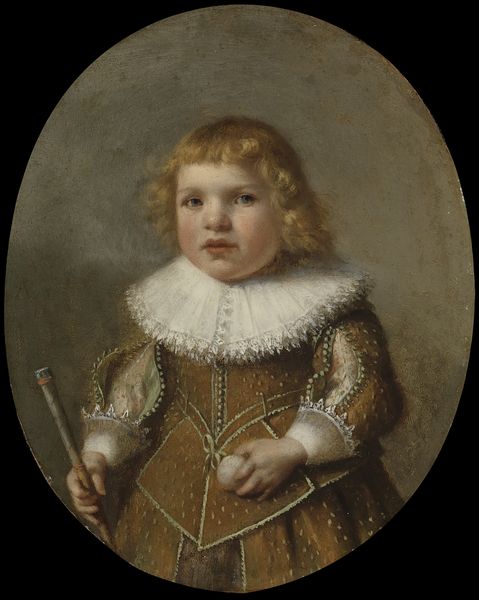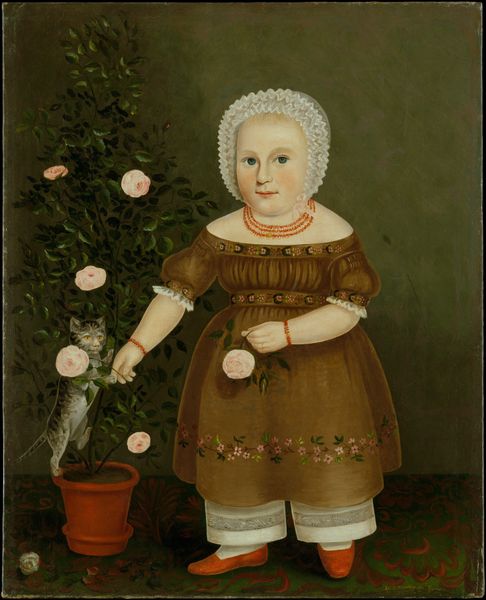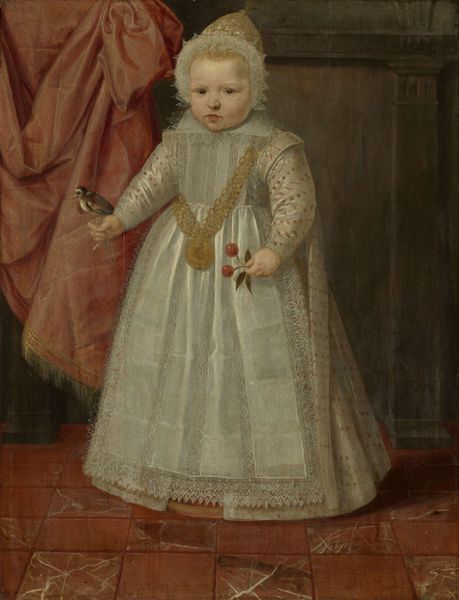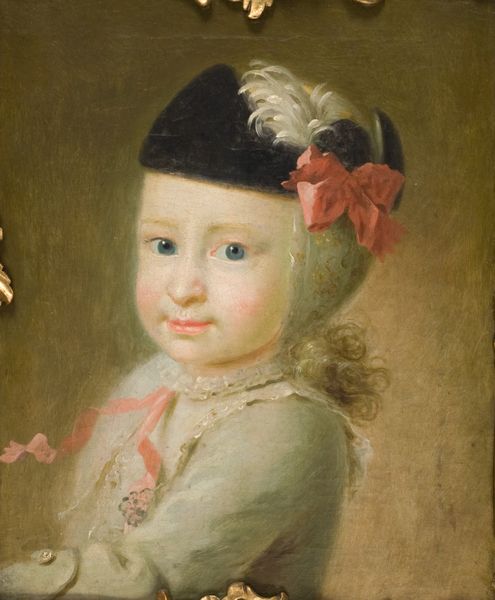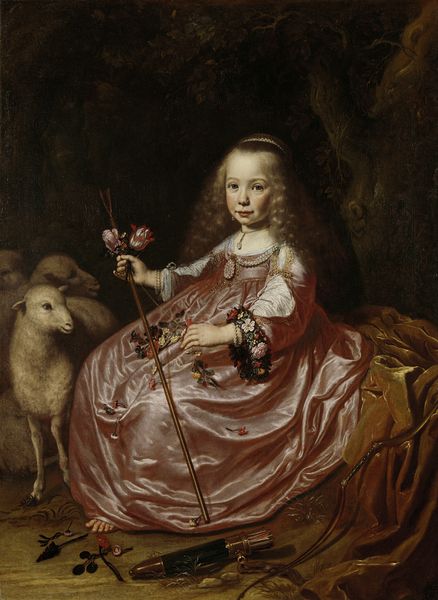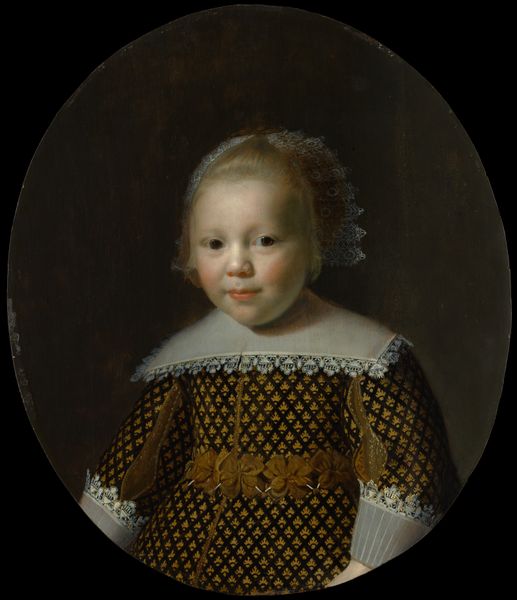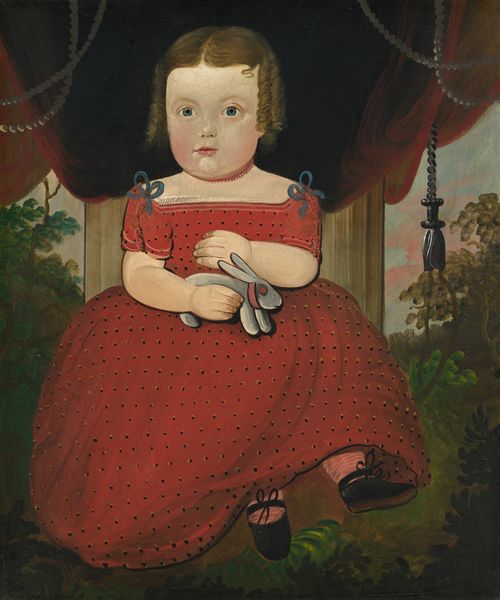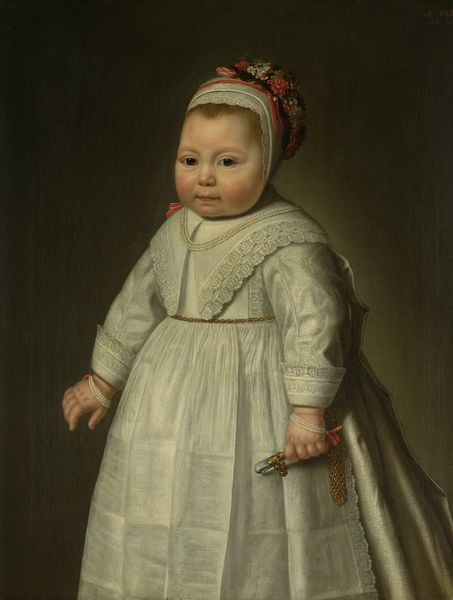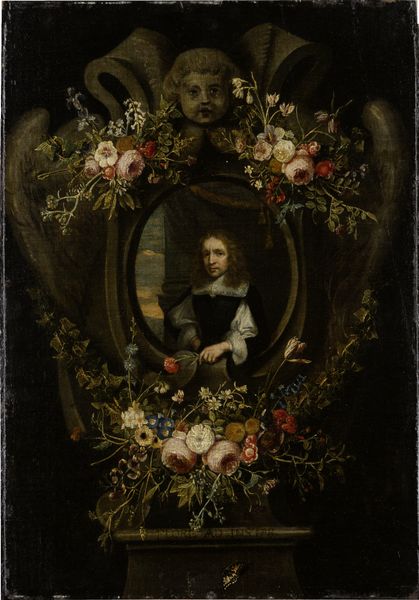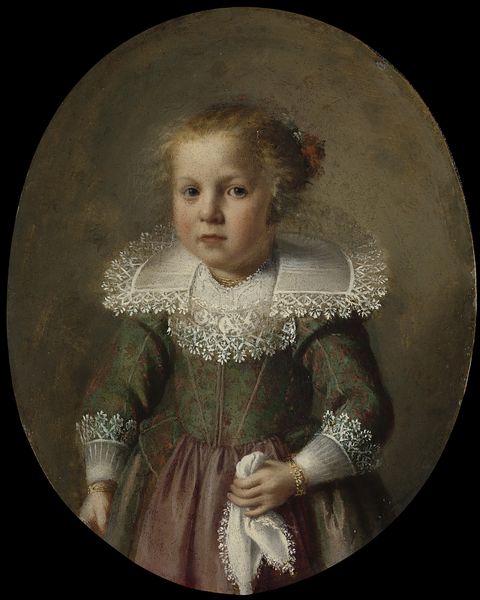
painting, oil-paint
#
portrait
#
baroque
#
painting
#
oil-paint
#
oil painting
#
genre-painting
Dimensions: support height 92.3 cm, support width 76 cm, outer size depth 4.5 cm
Copyright: Rijks Museum: Open Domain
Editor: So, here we have Willem van Vliet's "Portrait of a Boy" from 1638, created with oil paint. The level of detail in the boy's clothing is pretty impressive, almost overwhelming! What can you tell me about the way the materials contribute to the meaning of this piece? Curator: This portrait speaks volumes about the material conditions of 17th-century Dutch society. Consider the sheer opulence of the child's clothing – the lace, the velvet-like fabric, even the gold cross. Each element signifies wealth and status, reflecting the burgeoning merchant class and their investment in displaying their affluence. Editor: It’s interesting to think about how the pigments used contributed to this message as well. Curator: Precisely! The availability and cost of pigments played a significant role. The artist's choice of materials would reflect not only the desired aesthetic but also the economic resources available to him and his patron. Were these materials sourced locally, or were they imported luxury items? Think of the labour involved to get these colors. Editor: It's wild to think about the global trade involved in a painting like this, even back then. Did that influence the painting's value for the people who commissioned it? Curator: Undoubtedly. The ability to acquire and display imported materials like certain pigments added to the portrait’s prestige. It signaled participation in a globalized economy, reflecting Dutch power. It is important to realize how even artistic commissions are rooted in material realities, like that child’s potential life. Editor: It completely shifts my perspective, thinking of the materials themselves telling a story about trade and consumption rather than just aesthetic choices. I guess it’s all interconnected, right? The art, the wealth, and the social status of the time. Curator: Exactly! It highlights the important relationship between materials, social context, and the very creation and reception of art.
Comments
No comments
Be the first to comment and join the conversation on the ultimate creative platform.
